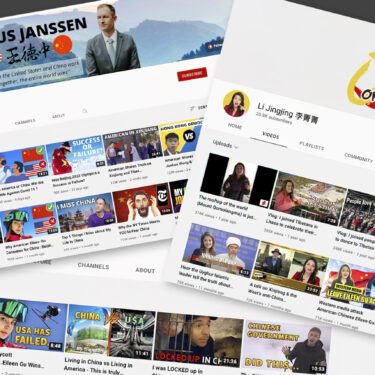The seed for this story was the discovery of an intriguing government filing: A New Jersey company had disclosed to the Justice Department that it was being paid $300,000 by the Chinese Consulate in New York to hire social media influencers to talk up China’s virtues during the 2022 Beijing Olympics.
This could have been a simple quick-hit spot story tied to the Olympics, but New Jersey reporter Mike Catalini, working with misinformation reporter Amanda Seitz and national security reporter Eric Tucker, recognized an opportunity to take a deep look into how China uses social media to spread propaganda and government talking points. Their reporting would find China relying on a network of reporters who disguise themselves as trendy online influencers — while benefiting from Westerners who amplify pro-Beijing messaging across platforms.
The trio discovered dozens of accounts maintained by people who were passing themselves off as ordinary social media influencers but who were actually connected to the Chinese government and its state media. They watched videos on the accounts,transcribing some of them and documenting patterns found in the themes and messaging pushed by the influencers,including efforts to counter Western criticism of global human rights abuse,advance the Chinese government’s perspective on Russia’s war on Ukraine and jab at the U.S. over Olympian Eileen Gu’s success while competing for China at the Winter Olympics.
Seitz,Tucker and Catalini cast a broad net in their reporting,speaking with current and former Justice Department officials and experts on both disinformation and China. Many of the subjects declined to answer questions or refused to disclose their direct links to China. To piece together the network and confirm the ties,the team conducted a forensic analysis of the influencers’ digital history,which included poring over Chinese state-affiliated media broadcasts and digging through websites, old videos and social media pages to identify evidence that would conclusively link the individuals to the state-run outlets.
The AP team conducted a forensic analysis of the influencers’ digital history, linking individuals to state-run media outlets.
The sharp visual display featured an array of screen shots of the influencers’ work,and to round out the piece,Washington-based video journalist Nathan Ellgren edited multiple hours of interviews into a roughly three-minute visual story. Ellgren spent a week reviewing documents,videos and websites, and painstakingly getting the legal clearance and permissions to use specific content in the piece. The video was AP’s most-viewed on Twitter the first day it was posted.
NEW: An @AP investigation into how China spreads propaganda and government talking points across social media platforms. It's an effort that's been in full swing during Russia's war against Ukraine. Here's what we've learned. W/@AmandaSeitz @mikecatalini: https://t.co/1Z1EJDl1LM
— Eric Tucker (@etuckerAP) March 30, 2022
The package won extremely strong play. It was featured in online tech and politics sections of various international news outlets and generated significant social media chatter,notably in tech and U.S. security circles where it was shared on Twitter by prominent reporters on those beats. The story was posted by,among others,a U.S. congressman,a former U.S. attorney who described it as “excellent,” and at least one U.S. news organization that wrote a column about AP’s reporting. The Geneva Summit for Human Rights and Democracy said it would feature the piece at its conference this week.
For providing readers with a comprehensive and engaging look at how China uses social media muscle to spread propaganda,the team of Seitz,Tucker, Catalini and Ellgren is AP’s Best of the Week — Second Winner.
Visit AP.org to request a trial subscription to AP’s video,photo and text services.
For breaking news, visit apnews.com




